Can Giant Sunflowers be Grown in Pots? A Guide to Growing Sunflowers in Containers
Giant sunflowers, with their massive blooms and towering heights, are a sight to behold. But can they be grown in pots? This is a common question among gardeners who are short on space or want to add some vertical interest to their patio or balcony. The answer is yes, but with some caveats.
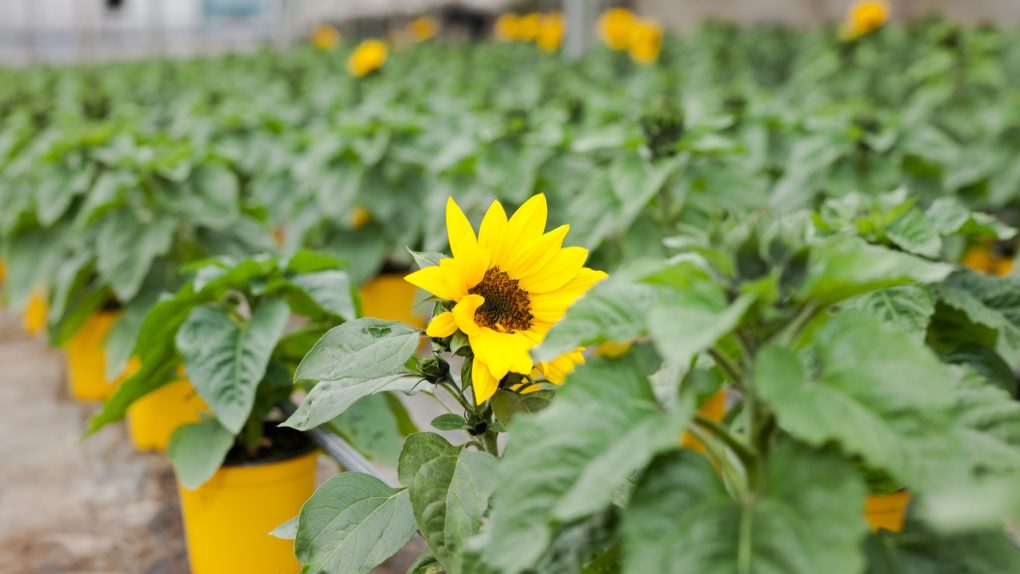
Firstly, it’s important to choose the right variety of sunflower. Dwarf or compact varieties, such as ‘Short Stuff’ or ‘Teddy Bear’, are better suited to container growing than the giant hybrids that can reach heights of 10 feet or more. These smaller sunflowers have shallower root systems and more manageable sizes, making them ideal for pots.
Secondly, the size of the pot matters. Sunflowers need plenty of room for their roots to grow, so choose a pot at least 10-12 inches in diameter for smaller varieties and 3-5 gallons or larger for giant hybrids. It’s also important to ensure the pot has enough drainage holes to prevent waterlogging, which can cause root rot.
Table of Contents
Choosing the Right Sunflower Variety
When growing sunflowers in pots, choosing the right variety is crucial. There are many sunflowers, ranging from dwarfs that stay under a foot tall to giants that can reach 14 feet or higher. Here are things to consider when selecting the right sunflower variety for your pot:
Dwarf Sunflowers
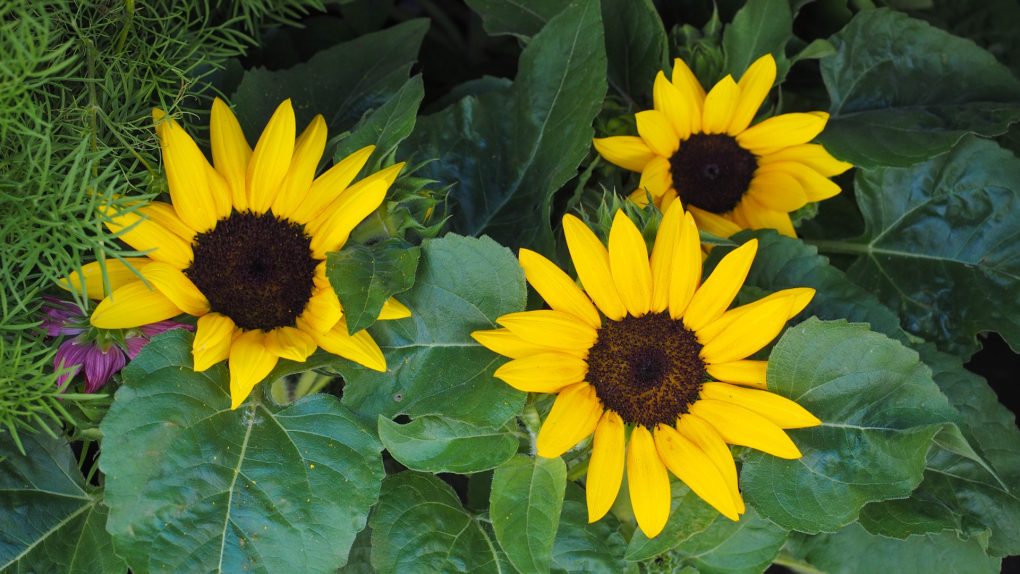
Dwarf sunflowers are perfect for small pots and containers. They typically grow up to 1-2 feet tall and produce smaller blooms. Here are some popular dwarf sunflower varieties:
- Soraya
- Sunny Smile
- Elf
Medium-Sized Sunflowers
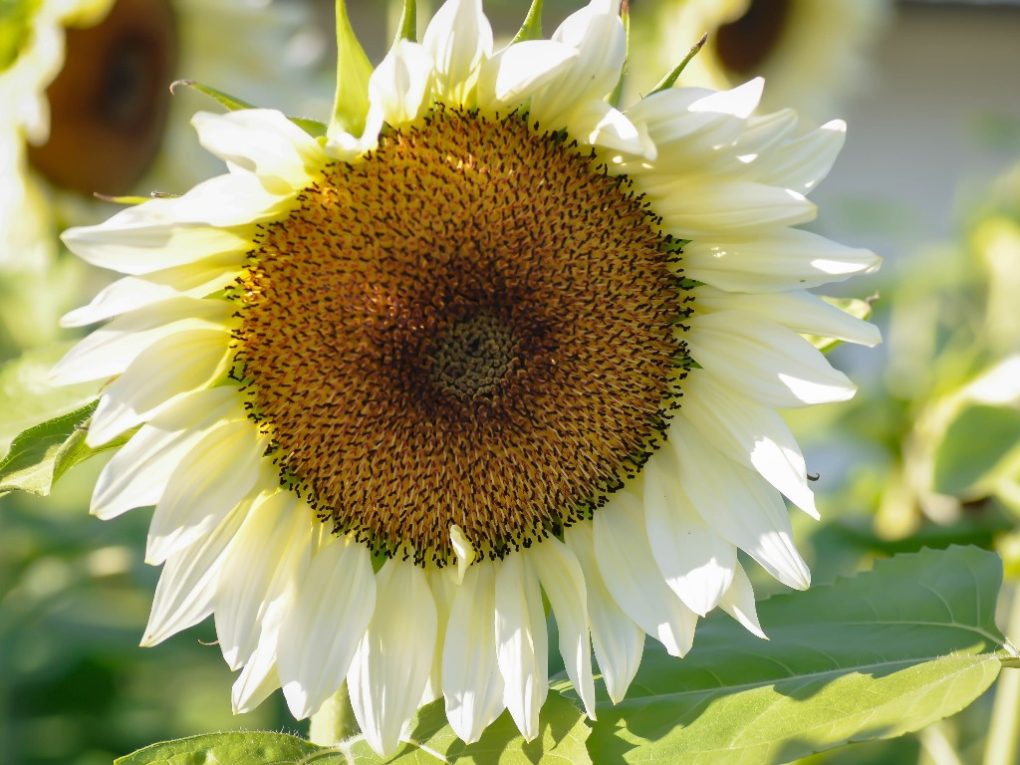
Medium-sized sunflowers are a good choice for slightly larger pots. They grow up to 4-5 feet tall and produce medium-sized blooms. Here are some popular medium-sized sunflower varieties:
- Lemon Queen
- Italian White
- Autumn Beauty
Giant Sunflowers
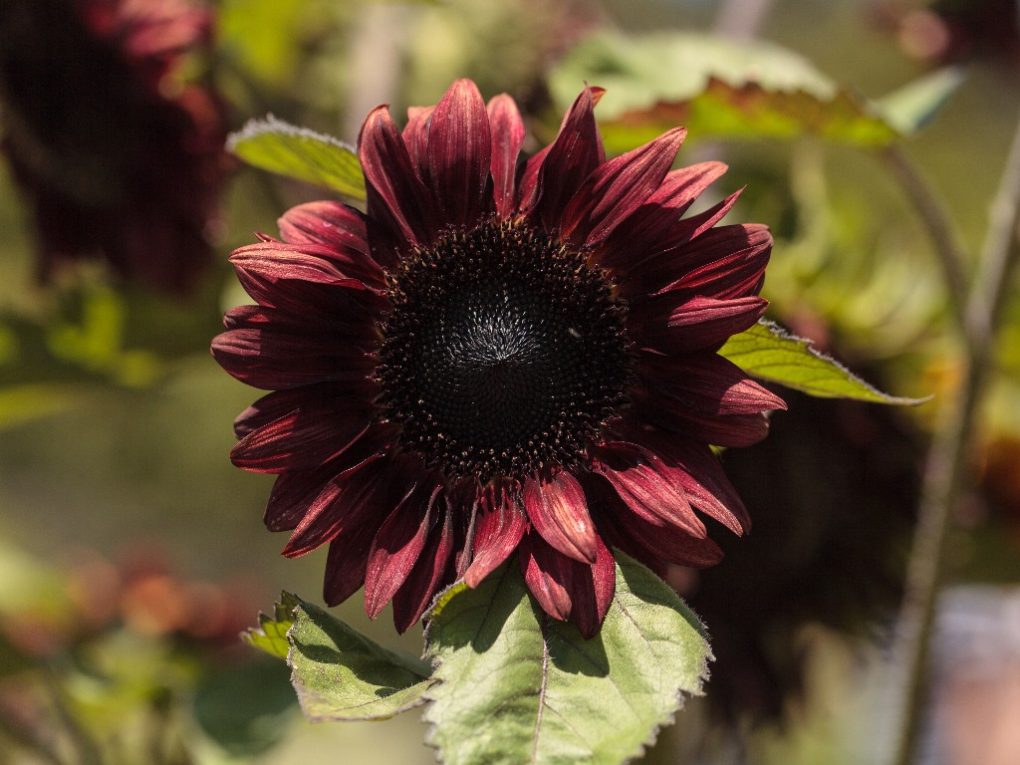
Giant sunflowers are the most challenging to grow in pots due to their size, but it is still possible with a large enough container. They can grow up to 14 feet tall and produce huge blooms. Here are some popular giant sunflower varieties:
- Russian Mammoth
- Skyscraper
- Moulin Rouge
Remember to choose a variety that fits the size of your pot, and consider the amount of sunlight your sunflowers will receive. The right sunflower variety and growing conditions can help you enjoy beautiful sunflowers all year long.
Selecting the Right Pot
Giant sunflowers are a beautiful addition to any garden, but can they be grown in pots? The answer is yes, but choosing the right pot is important to ensure your sunflowers thrive. Here are factors to consider when selecting the right pot for your giant sunflowers.
Size
The size of the pot is an important factor to consider when growing giant sunflowers. Sunflowers have deep taproots that require ample space to grow. A pot that is too small will stunt the plant’s growth and may even cause it to die.
When selecting a pot for your giant sunflowers, choose one that is at least 10 to 15 gallons in size. This will provide enough space for the roots to grow and the plant to thrive. If you are growing multiple sunflowers in one pot, ensure the pot is large enough to accommodate all of them.
Material
The material of the pot is also an important factor to consider. Clay pots are popular for growing sunflowers because they are porous and allow for good drainage. However, they can be heavy and may require more frequent watering. Plastic pots are lightweight and easy to move around, but they may not provide as much drainage as clay pots.
Another option is fabric pots made from breathable material that allows for good drainage and air circulation. Fabric pots are lightweight, easy to move around, and can be folded for storage when not in use.
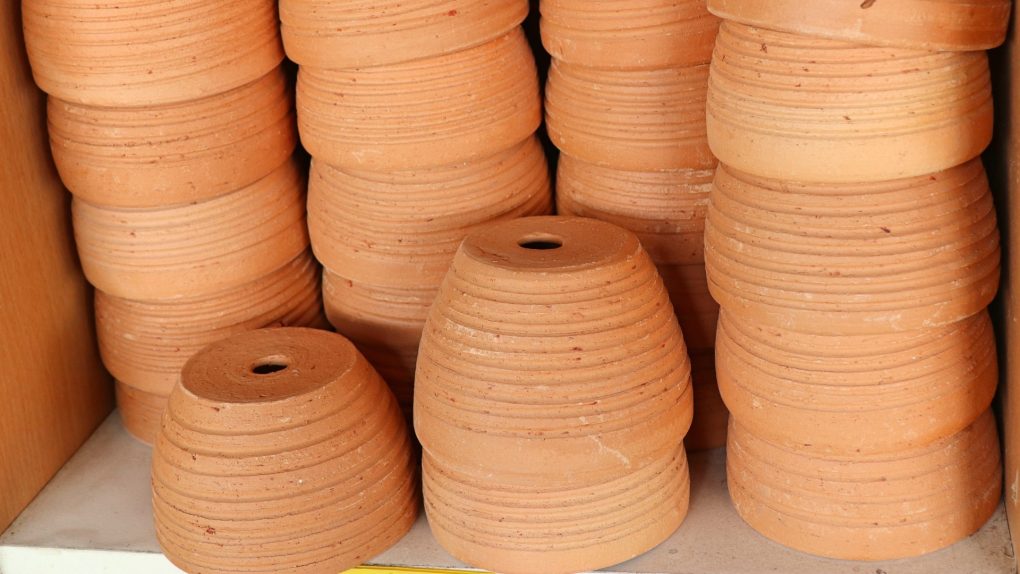
Drainage
Proper drainage is crucial when growing giant sunflowers in pots. The soil can become waterlogged without adequate drainage, leading to root rot and other problems.
Ensure the pot you choose has drainage holes in the bottom to allow excess water to escape. You can also add a gravel or rocks layer to the pot’s bottom to improve drainage.
When watering your sunflowers, water deeply and allow the soil to dry out slightly between waterings. This will help prevent overwatering and ensure your sunflowers stay healthy and strong.
Preparing the Potting Mix
Ingredients
When growing giant sunflowers in pots, using a potting mix rich in nutrients and well-draining is important. A good potting mix should contain a blend of organic matter, such as compost or aged manure, and good quality potting soil.
Additional ingredients that can be added to the potting mix include perlite or vermiculite to improve drainage and aeration, and sand or peat moss to improve soil texture.
Mixing Ratios
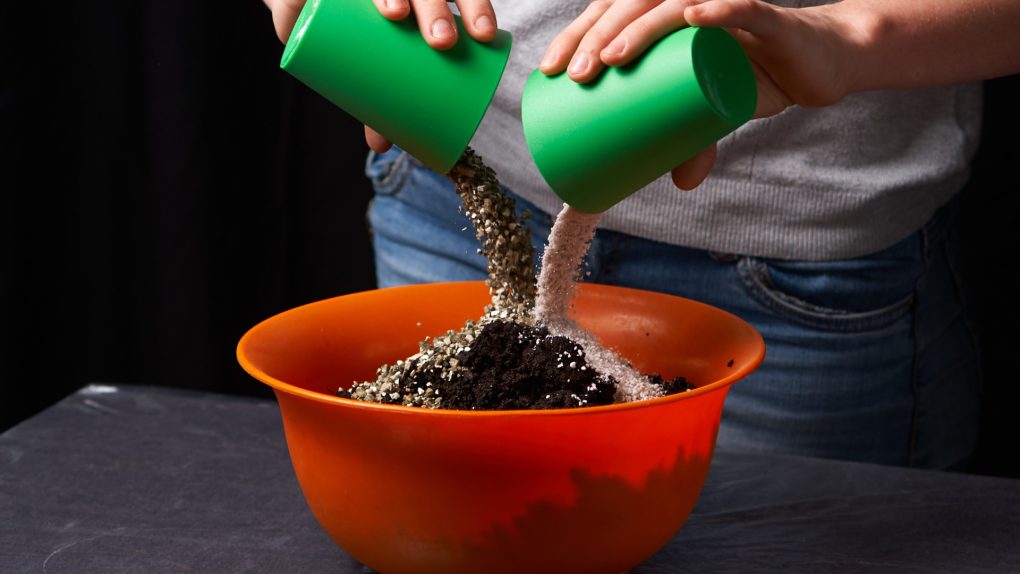
When preparing the potting mix, getting the right mixing ratios is important. A general rule of thumb is to mix the potting soil and organic matter in a 1:1 ratio.
Adjust the ratios accordingly if you add additional ingredients to the potting mix. For example, if you add perlite or vermiculite, mix it in at a ratio of 1 part perlite/vermiculite to 2 parts potting mix and organic matter.
Fertilization
Giant sunflowers require a lot of nutrients to grow to their full potential. To ensure that your sunflowers have all the nutrients they need, it is important to fertilize the potting mix before planting.
Depending on your preference, you can use a slow-release fertilizer or a liquid fertilizer. For application rates and frequency, follow the manufacturer’s instructions.
Additionally, consider adding a layer of compost or aged manure to the top of the potting mix after planting to provide additional nutrients throughout the growing season.
Planting Giant Sunflowers in Pots
Sowing Seeds
Giant sunflowers can be grown in pots, but choosing the right size and soil is important. For giant sunflowers, a 10 to 15 gallon pot is recommended. Fill the pot with a good quality general purpose potting soil that retains moisture and has good drainage.
Plant the sunflower seeds no more than an inch deep and about 6 inches apart. Keep the soil moist but not waterlogged. The seeds should germinate in about 7 to 10 days.
Once the seedlings are about 6 inches tall, thin them out, leaving the strongest plants about 24 inches apart.
Transplanting Seedlings
If you started your sunflowers in small pots, you can transplant them to larger pots once they are about 6 inches tall. Choose a pot that is at least 10 gallons in size and has good drainage.
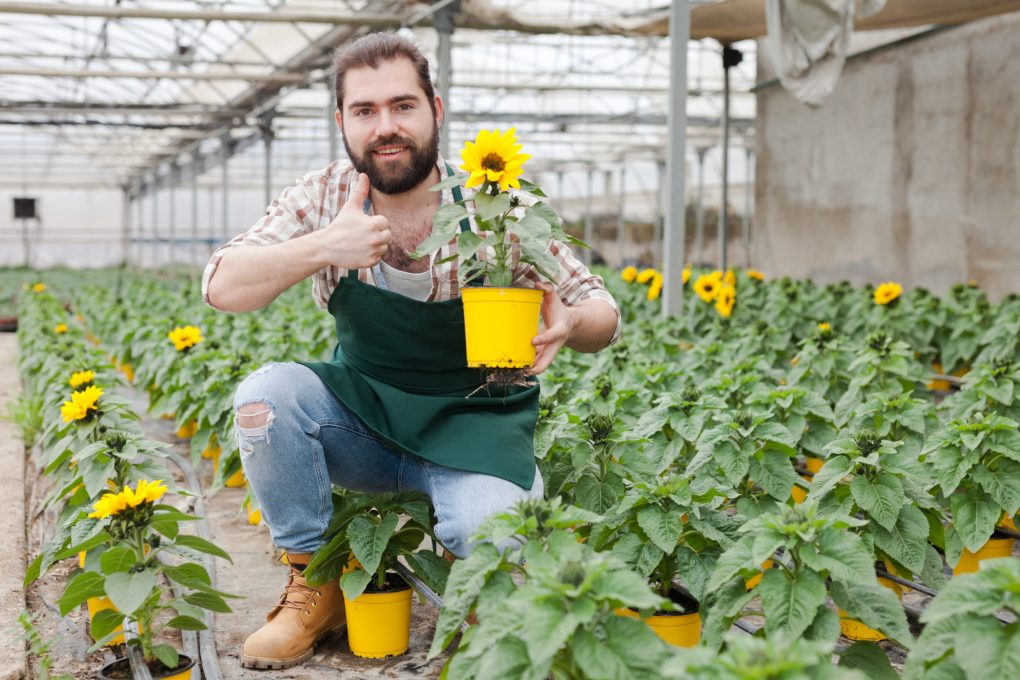
Fill the pot with a good quality general-purpose potting soil that retains moisture and has good drainage. Make a hole deep enough for the root ball of the sunflower seedling in the center of the pot.
Carefully remove the seedling from its smaller pot and place it in the hole in the larger pot. Then, fill around the root ball with soil and gently firm the soil around the plant.
Water the sunflower well after transplanting and keep the soil moist but not waterlogged.
Planting Giant Sunflower in Pots
- Choose a pot that is at least 10 to 15 gallons in size.
- Fill the pot with good quality general-purpose potting soil that retains moisture and has good drainage.
- Plant the sunflower seeds no more than an inch deep and about 6 inches apart
- Thin the seedlings once they hit 6 inches tall, leaving the strongest plants about 24 inches apart.
- Carefully transplant seedlings to larger pots, choosing a pot that is at least 10 gallons in size with good drainage.
- Water the sunflowers well after transplanting and keep the soil moist but not waterlogged.
Caring for Giant Sunflowers in Pots
Growing giant sunflowers in pots can be a fun and rewarding experience. However, caring for them properly is important to ensure they reach their full potential. Here are some tips for caring for giant sunflowers in pots:
Watering
Giant sunflowers in pots need regular watering to help them form sturdy stalks and large flowers. Pots dry out quicker than garden beds, so watering frequency depends on the weather and plant and pot size. The soil should be kept moist but not waterlogged. There are a number of problems that can be caused by overwatering, including root rot. The rule of thumb is to water deeply once a week, or more often during hot, dry weather.
Feeding
Giant sunflowers in pots need regular feeding to give them the nutrients they need to grow big and strong. It is recommended that you use a fertilizer that contains equal amounts of nitrogen, phosphorus, and potassium. Follow the instructions on the fertilizer package for application rates and frequency. Too much fertilizer can burn the plants, so it’s important to use it sparingly.
Supporting the Plant
Giant sunflowers can grow quite tall and heavy, so providing adequate support is important. Staking the plants with bamboo or wooden stakes can prevent them from toppling over in strong winds. As the plants grow taller, tie them with soft garden twine to the stakes. This will help prevent them from bending or breaking under their own weight.
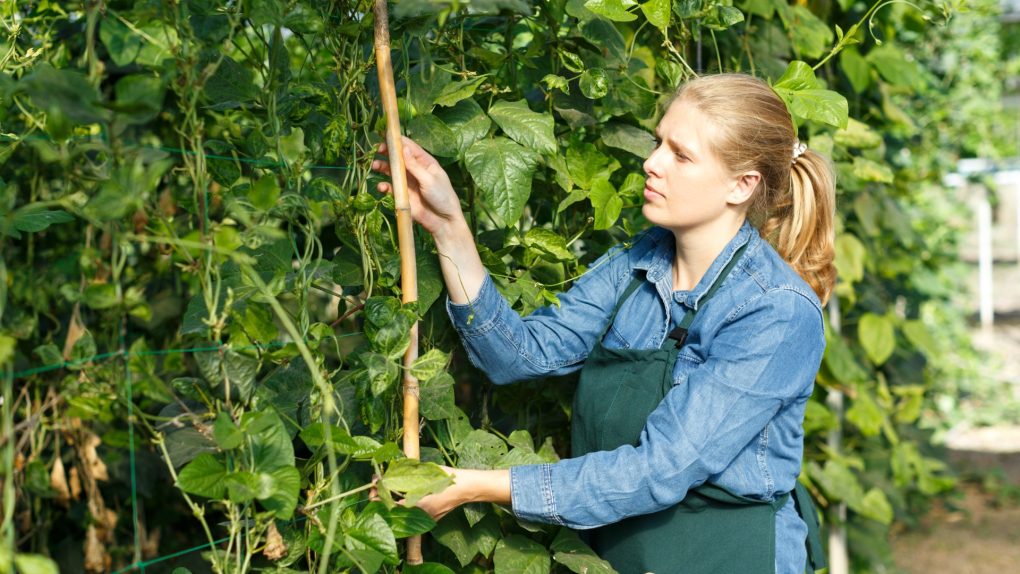
Caring for giant sunflowers in pots can be a fun and rewarding experience. You can enjoy these beautiful and impressive plants in your backyard with proper care.
Harvesting and Storage
When to Harvest
Giant sunflowers should be harvested when the back of the flower head turns brown and the seeds are plump and fully developed. The petals on the flower head will also wilt and fall off. Harvesting the sunflowers before the birds start to eat the seeds is important.
How to Harvest
Use a sharp pair of scissors or pruning shears to cut the sunflower head off the stalk. Leave a few inches of stem attached to the head. If the stem is too short, the head may fall out of the seed cavity during storage.
After cutting the sunflower head, remove any remaining petals and leaves, then gently rub the head to remove any dirt or debris.
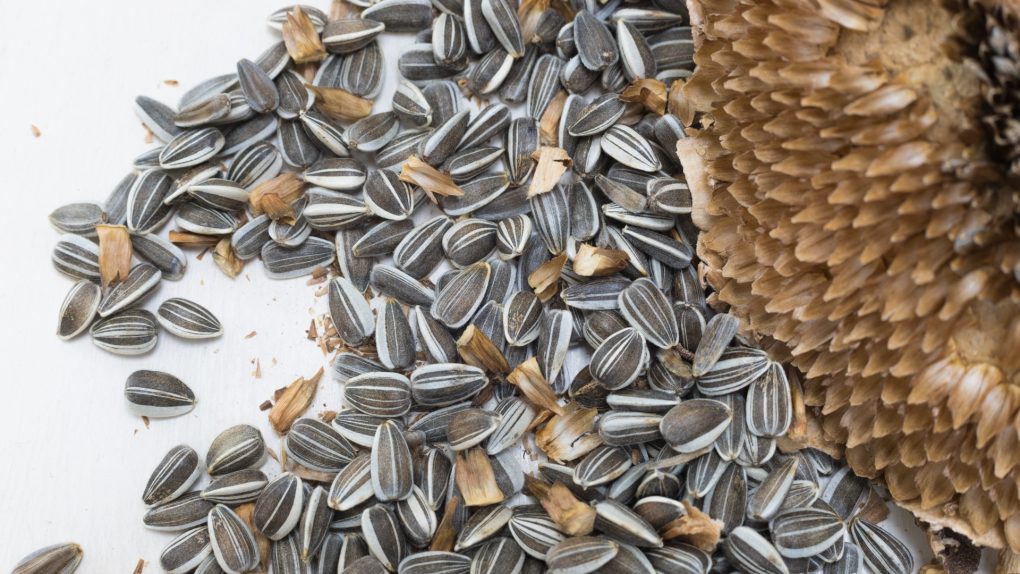
Storage Tips
Before storing the sunflower heads, make sure they are completely dry. This will prevent mold and mildew from forming during storage.
Store the sunflower heads in a cool, dry place like a garage or basement. Place the heads in a paper bag or cardboard box to protect them from moisture and pests.
If you plan to save the seeds for planting next year, label the storage container with the date and variety of sunflower. Sunflower seeds can remain viable for up to five years if stored properly.
Alternatively, you can roast the sunflower seeds for a tasty snack. Spread the seeds on a baking sheet and roast them in the oven at 350 degrees Fahrenheit for 15-20 minutes, or until lightly browned.
